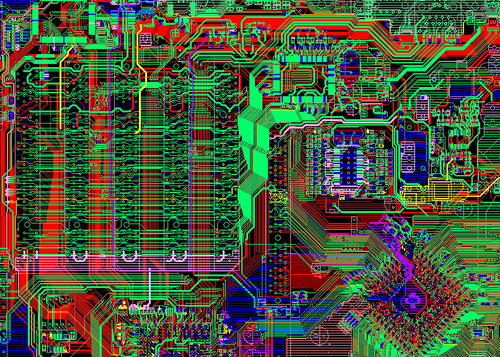 +86 755 2794 4155
+86 755 2794 4155  sales@knownpcb.com
sales@knownpcb.com
-
Shenzhen KNOWNPCB Technology Co., Ltd.
 +86 755 2794 4155
+86 755 2794 4155  sales@knownpcb.com
sales@knownpcb.com
 2024-03-07
2024-03-07
 416
416

First, it is used as an electrical connection between the layers; The second is used as the fixing or positioning of the device. If you look at the process, these holes are generally divided into three categories, namely blind via, buried via and through via. Blind holes are located on the top and bottom surfaces of the printed circuit board and have a certain depth for the connection of the surface circuit and the inner circuit below, and the depth of the holes usually does not exceed a certain ratio (aperture). The buried hole refers to the connection hole located in the inner layer of the printed circuit board, which does not extend to the surface of the board. The above two types of holes are located in the inner layer of the circuit board, which is completed by the through hole molding process before lamination, and several inner layers may be overlapped during the formation of the through hole. The third type is called through-holes, which pass through the entire circuit board and can be used to achieve internal interconnection or as installation positioning holes for components. Because the through hole is easier to achieve in the process and the cost is lower, the vast majority of printed circuit boards use it, rather than the other two through holes. The following holes, without special instructions, are considered as through holes.
From a design point of view, a through hole is mainly composed of two parts, one is the drill hole in the middle, and the other is the pad area around the drill hole, see the figure below. The size of these two parts determines the size of the hole. Obviously, in high-speed, high-density PCB design, the designer always hopes that the smaller the hole, the better, the template can leave more wiring space, in addition, the smaller the hole, its own parasitic capacitance is smaller, more suitable for high-speed circuits. But the reduction in hole size also brings an increase in cost, and the size of the hole can't be reduced indefinitely, it is limited by technology such as drilling and plating: the smaller the hole, the longer it takes to drill, and the easier it is to off-center; When the depth of the hole is more than 6 times the diameter of the hole, it is impossible to ensure that the hole wall can be uniformly plated with copper. For example, the thickness (through hole depth) of a normal 6-layer PCB board is about 50Mil, so the minimum drilling diameter that PCB manufacturers can provide can only reach 8Mil.
The parasitic capacitance through the hole itself has a parasitic capacitance to the ground. If the diameter of the isolation hole through the hole on the paving layer is known to be D2, the diameter of the welding pad through the hole is D1, the thickness of the PCB board is T, and the dielectric constant of the substrate is ε, the parasitic capacitance through the hole is approximately: The main effect of the parasitic capacitance of C=1.41εTD1/(D2-D1) through the hole on the circuit is to prolong the rise time of the signal and reduce the speed of the circuit. For example, for a PCB with a thickness of 50Mil, if you use a hole with an inner diameter of 10Mil and a pad diameter of 20Mil, The distance between the pad and the copper area on the floor is 32Mil, so we can approximate the parasitic capacitance of the hole through the above formula as C=1.41x4.4x0.050x0.020/(0.032-0.020)=0.517pF, and the rise time change caused by this part of capacitance is as follows: T10-90=2.2C(Z0/2)=2.2x0.517x(55/2)=31.28ps. From these values, it can be seen that although the utility of the rise delay caused by the parasitic capacitance of a single hole is not very obvious, the designer should still carefully consider if the hole is used multiple times in the line to switch between layers.

Or call +86 755 2794 4155
Inquiry Now

